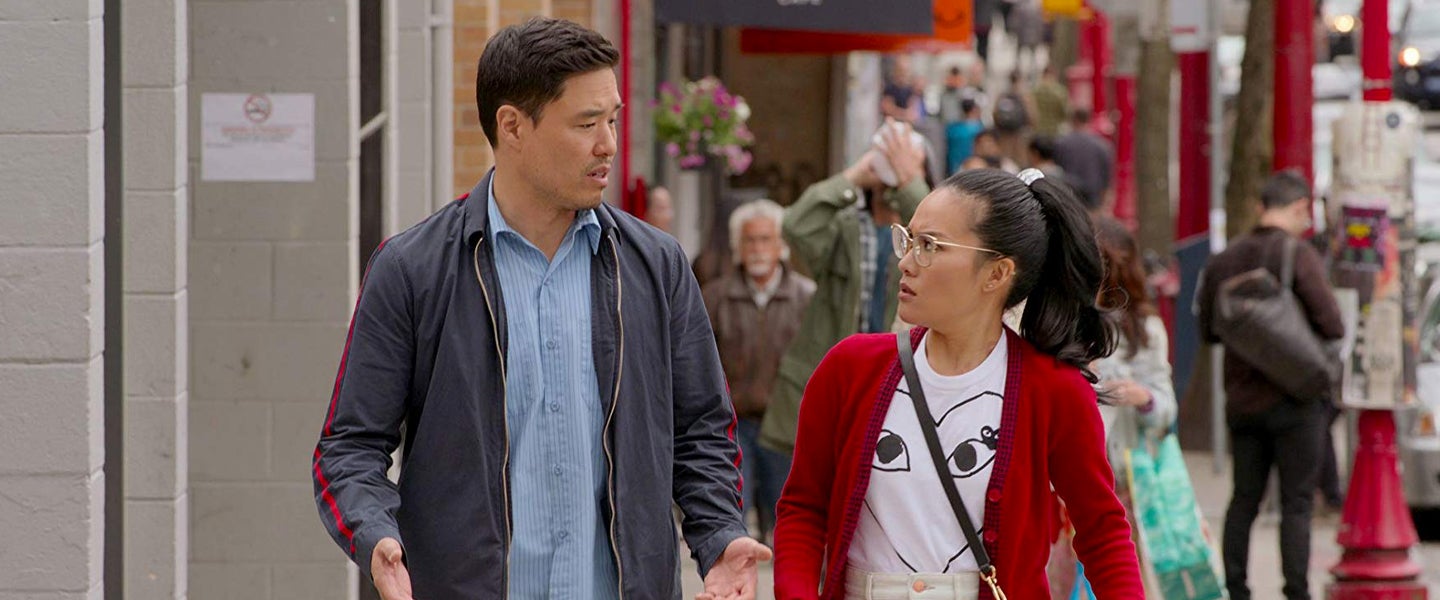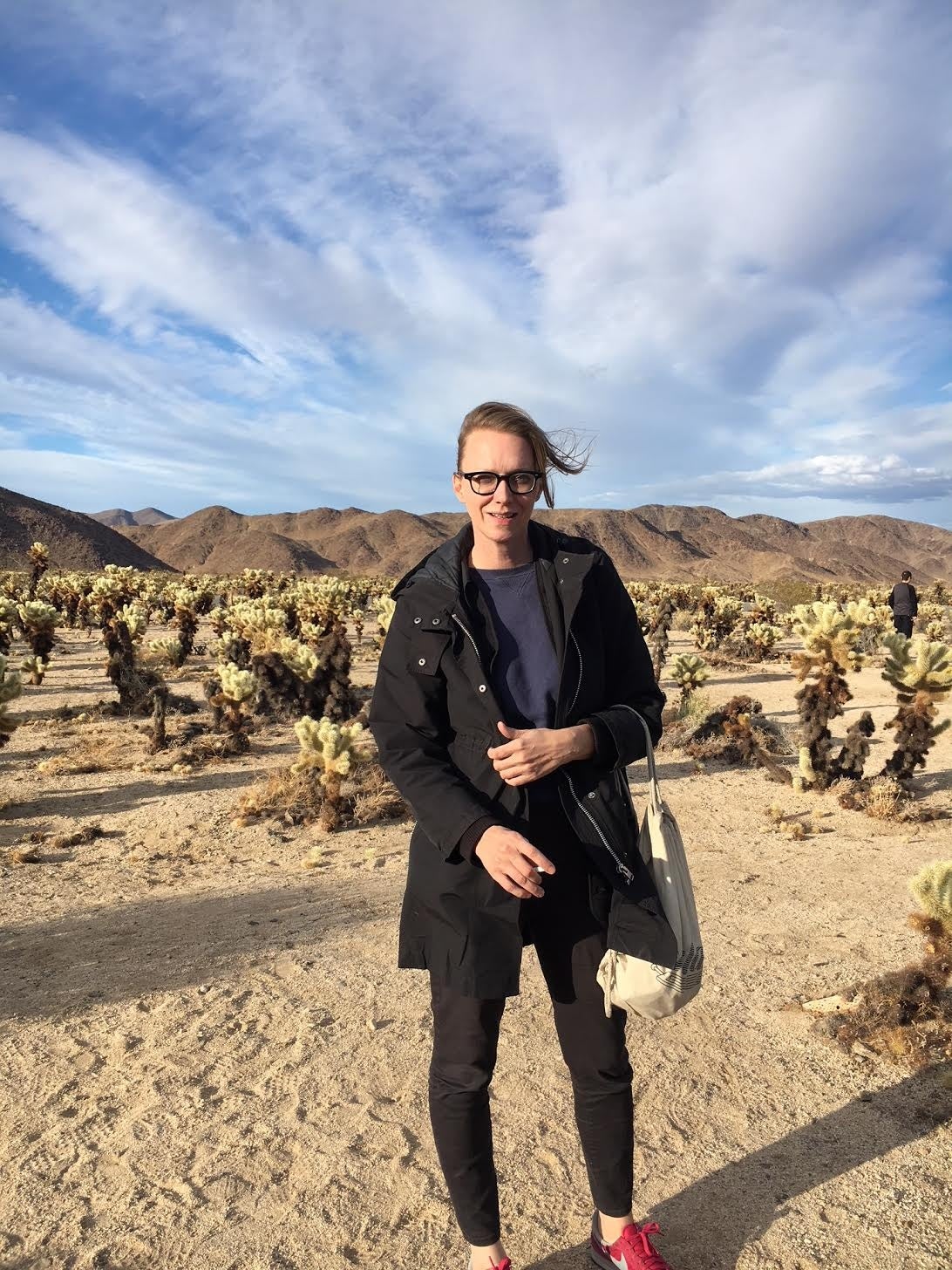Always Be My Maybe, a Netflix movie starring Ali Wong and Randall Park, may have just resuscitated the rom-com. It’s not totally clear the body won’t reject the organ transplant just yet, but no one movie can do that for an entire genre alone. Still, it’s arguably done something far better: Given us a treatment plan for what to do with a kind of flick that, by most accounts, died a long time ago. And part of the antidote involves Keanu Reeves.
First though, the film. Always Be My Maybe, which features Wong as Sasha Tran and Park as Marcus Kim, is about two inseparably chummy childhood friends in San Francisco who hook up in a moment of horny grief as teens, then awkwardly part ways after falling out, only to then run back into each other as proper adults.
Only, now she’s an affluent, bougie, annoying New York celebrity chef, and he’s a grumpy, broke aspiring San Francisco musician and air-conditioner installer for the family business. She’s engaged to someone else, and he’s spiritually and sexually married to someone else. She’s an outspoken, driven professional. He… isn’t.
But during a break in the engagement to take some time apart, Tran ends up back in San Francisco, where Kim still lives at home. Their childhood banter and rapport is still there, but so is the side-eye about their past, and their vastly different presents. What now?
In a setup familiar to any student of the genre, they’re both with people who don’t truly get them. And as they’re both conveniently nudged or forced directly into each other’s paths, we — and they — know that they must eventually contend with what was, and what always might’ve been.
But first they have to spend most of the movie irritated with each other. She’s irritated that he lacks more ambition for his life, or his band. He’s irritated that she sits around eating tiny food and has built an entire career on elevating Asian cuisine for white people instead of having the guts to just celebrate it as it is.
This long-standing irritation between two clearly meant-for-each-other people is a hallmark of the relationship between Meg Ryan and Billy Crystal in When Harry Met Sally, and notably, Wong told The New Yorker in 2016 that she and Park, who wrote the screenplay with Michael Golamco, always wanted to do their version of that film. (Wong and Park themselves are longtime friends.)
If all they had done was revisit an existing, genre-defining movie by updating it with texting and Asian actors, it wouldn’t have offered much in the way of guidance for an entire genre’s future. What they did instead is show all the reasons people continue to get in their own way and derail their best chances for happiness in today’s world — which is vastly different than what happened in When Harry Met Sally, whose biggest obstacle is really about male fear of commitment, something we used to be able to hang entire (far less well-made) films on.
This “problem” was exactly what killed the rom-com in the first place.
If the idea that the rom-com flatlined surprises you, no one could blame you. You wouldn’t know unless you were paying attention to film criticism a decade ago, when critics quietly noted all the big rom-coms — aside from a few exceptions — pretty much sucked big ones. There was no great fanfare or even a true obituary, a death more akin to a whimper than a bang. In 2008, A.O. Scott, the film critic at the New York Times, noted that not only do the actors in today’s rom-coms lack the sparkle of the greats who defined the genre (such as Cary Grant and Katharine Hepburn), but the films themselves became mediocre hogwash: A lot more 27 Dresses than Juno or Knocked Up.
Then, in 2013, The Atlantic’s Christopher Orr took it a step further to explain why rom-coms were limping along on life support. In short, he argued, modern life, and modern love stories, simply lack the kinds of obstacles that used to keep people apart, and by extension, romantic comedies have no real issues to get around or risks to take that make for a compelling storytelling. There’s no parental disapproval or different social classes, there are no taboos against premarital sex, there’s no longer any real issue with being from different races, religions or genders.
So basically, if we lifehacked love so shrewdly that it truly conquers everything, what on earth could get in the way of two people getting together that anyone would want to watch?
Always Be My Maybe answers that question, though it shouldn’t have had to, because the answer was always right there in front of us, hiding in plain sight: Uh, everything. The obstacles are, and always have been, ourselves. Obstacles such as:
- Different ambition
- Different lifestyles
- Different values
- Money
- Bad timing
- Different cities
- Had sex already
- Having sex with someone else right now
- Already had a girlfriend when they met
- Got another boyfriend before realizing their feelings
- Still drives Toyota Corolla
- Hates the tiny food you built a career on
- Hates your Asian girlfriend’s dreads and enthusiasm
That’s not as exciting an obstacle as having to win over your girlfriend right before she marries someone else because she found out you were fucking her mom (The Graduate), but it’s far more realistic. And that’s what’s at the heart of Always Be My Maybe’s appeal.
I have to note that the fact of the film’s cultural identity is important alone — I don’t remember a single white person in the film. It also gives us an Asian depiction of family, success and striverdom we still have far too little of in movies. Also worth noting: The film’s treatment of gender feels just as fresh. Tran is the driven one in the story; Kim isn’t. Rather than have the male character responsible for making the relationship happen, they both have to cross a line and take a risk. There’s never a question of whether Tran’s career is an impediment to them being together, even though it leads the story.
Wong and Park aren’t off the charts in terms of chemistry, but it would be weirder if they were, since the story is built around two people quietly avoiding how they really feel for decades. Overall, it shows us something a lot closer (although much wittier) to what a modern romantic story is like now: Two stubborn people just trying to figure out how to be together in spite of themselves. What’s weirdest of all is how radical that alone is.
Here are three other takeaways from Always Be My Maybe…
#1. We need a lot more Charlene Yi.
Yi, who gave standout comedic performances in Knocked Up and This Is 40, gets a mere two to three lines of a dialogue in the film as a woman in Kim’s band, Hello Peril. This is a disgrace. As a substitute then, here are her funniest scenes from This Is 40:
#2. We also could have used a lot more crass Ali Wong
Wong, whose searingly crass standup special Baby Cobra killed on the frank discussions of pregnancy and vaginal discomforts, only gets a few chances in Always Be My Maybe to really shine on the gross-out front. The major one is when she screams at her fiancé that she hopes he “gets malaria and shits himself to death” in front of a party of children and goats. So again, allow me to provide you with a taste of what she’s really capable of:
#3. Keanu Reeves, though!
Reeves makes a stellar appearance in Always Be My Maybe that’s self-conscious, pretentious and funny. He’s also responsible for the film’s most outrageous sequence of events, which in part, involves a $6,400 restaurant tab in a scene that serves as perhaps the ultimate foodie takedown. In many ways, the off-the-charts chemistry of the film is Reeves — Reeves and Wong, and Reeves and Park.

